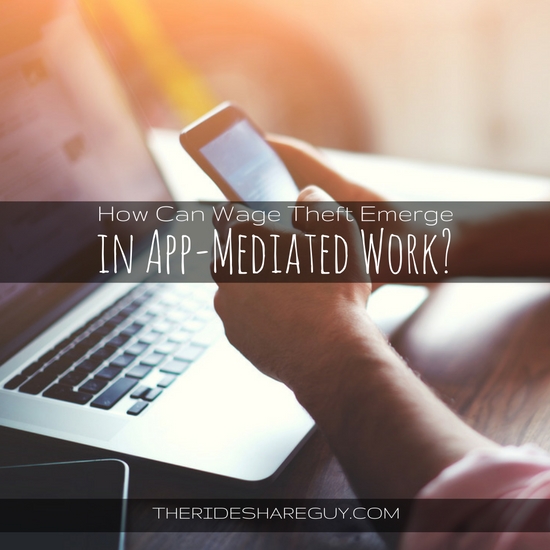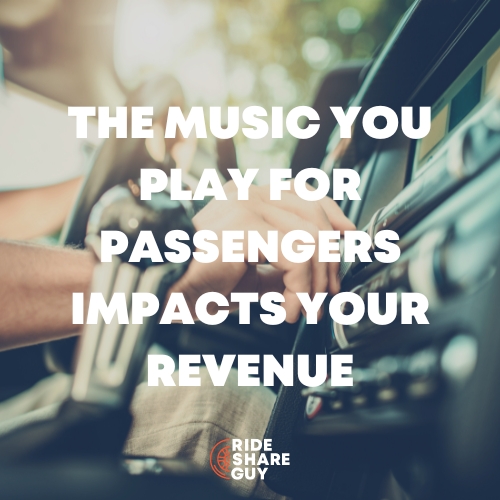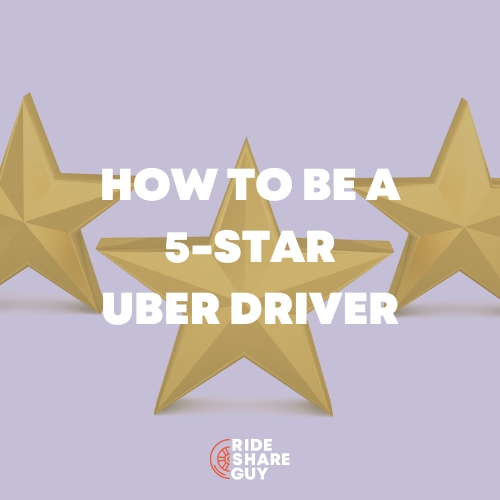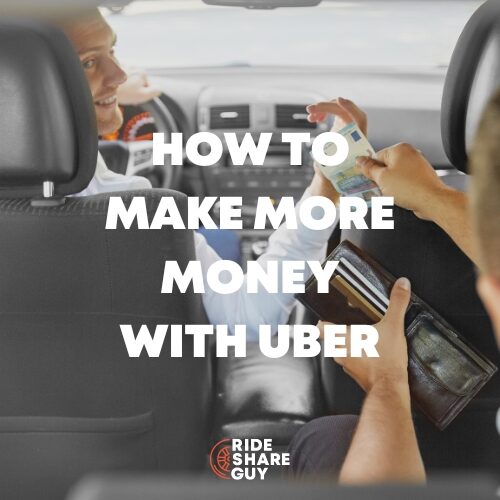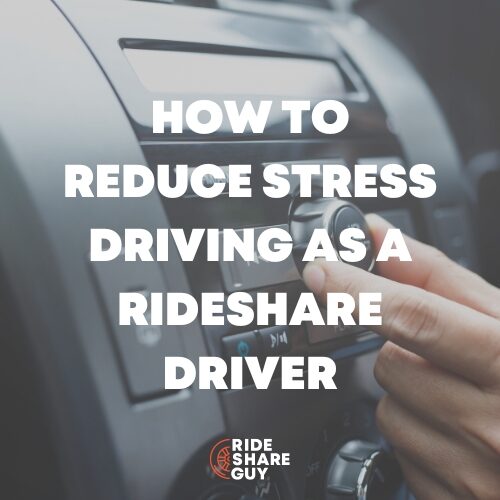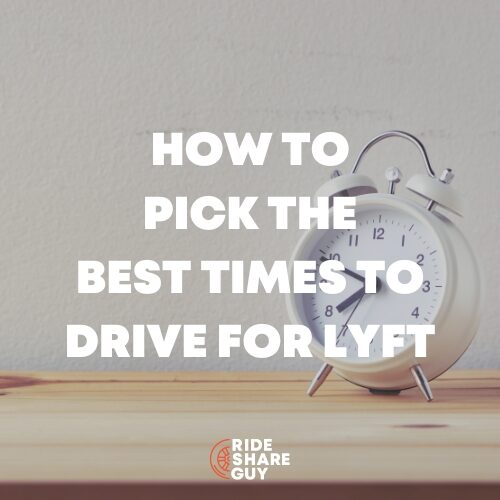Harry here. Today we’re featuring a new special contributor, Alex Rosenblat of the Data & Society Research Institute. Alex is a friend and one of the people I respect most when it comes to the issues drivers face on a daily basis. Although not a driver herself, she has spent countless hours researching the issues, talking with drivers online and in person and studying the industry.
Alex’s first post has to do with all the ways that wage theft can and is emerging with work via an app. I’m not convinced that Uber is maliciously stealing money from drivers but when you look at the design (or lack of design) of many of the systems and programs in place, it can sure feel like things are heavily slanted in favor of the big guys.
A lot of discussions around the gig economy or the sharing economy assume that the technology always works as promised, or as outlined by company policies, at Uber and elsewhere. But there are bugs in the implementation of tech which negatively impact drivers on the ground. In effect, Uber’s policies and practices don’t always square with driver experiences.
One of the benefits of app-mediated work is that work time and activities are monitored, which should, in theory, reduce inequities like prospective wage theft. But technology doesn’t produce accountability automatically. In Uber’s system, Uber has the power to enforce or carve out what work is paid (cancellation fees) and what isn’t (e.g. the return of lost items), or what is tracked and what isn’t, and drivers have very little recourse to negotiate inequities in the system.
Below are a series of issues that come up in driver experiences. Some of these, like unpaid cancellation fees, look potentially like automated wage theft at scale; others center on issues of fairness. While these issues don’t speak to bad intentions by the company, they are interesting indicators of how age-old employment issues can emerge in different forms through software.
One way to remedy challenges workers face is to address discrepancies between how the tech is supposed to work, and where workers experience real gaps in that promise, such as through policy changes, new design features that improve transparency, or better communications about technological limitations.
1. Cancellation Fees
Drivers in forums and in interviews repeatedly describe how they wait the prescribed 5 minutes before they’re allowed to claim a cancellation fee, but when they check their pay stubs, there’s no cancellation fee after they requested it, even though they’re certain they waited 6 or 7 minutes, just to be sure.
With Uber, drivers receive cancellation fees in two situations. The first occurs when a passenger cancels the trip after more than 5 minutes have elapsed since they made the request. The second occurs when a driver arrives at the destination but the passenger is not ready to ride or unreachable. In order to get a cancellation fee, the driver must wait 5 minutes before they can cancel a ride and then the passenger is charged a cancellation fee. If the driver cancels before 5 minutes are up, there is no fee charged to the passenger. To their credit, Uber has started testing out two-minute wait times in some cities, whereas a passenger will be charged the going rate per minute after two minutes have passed.
Fees vary by city and tier of service (and select cities, like Houston, are excluded). But generally, the passenger should be charged a $5 cancellation fee for uberX in either scenario, and the driver receives $3.75, after Uber’s 25% cut.
Do Uber’s practices violate its own contract and policy terms?*
What Uber Recommends:
Provision 2.2 of Uber’s contract (Dec. 2015) with its Driver-Partners: “In order to enhance User satisfaction with the Uber mobile application and your Transportation Services, it is recommended that you wait at least ten (10) minutes for a User to show up at the requested pick-up location.”
Even though drivers are supposed to receive cancellation fees after 5 minutes have passed, Uber “recommends” drivers wait at least 10 minutes for the passenger to show up, essentially generating goodwill for the company through the driver’s unpaid waiting time.
What Uber’s stated policy is (from 2015-05-30):
Uber’s policy indicates that cancellation fees are automatically (“will incur”) charged to passengers and remitted to drivers, as opposed to creating an onus on drivers to claim fees formally after they request their cancellation fees.
 When drivers cancel the ride, they have the option to not levy the fee (which newer drivers, generally, might do if they feel about the passenger was not in the right place, for example). But after drivers request the fee, the recurrent complaint is that drivers do everything right and the fee still doesn’t come. While it could be that some of these drivers have not truly waited the full 5 minutes, or they are not in the place they say they are, the more concerning thing is drivers who didn’t get the fee when they clearly waited in the right place for 5 minutes.
When drivers cancel the ride, they have the option to not levy the fee (which newer drivers, generally, might do if they feel about the passenger was not in the right place, for example). But after drivers request the fee, the recurrent complaint is that drivers do everything right and the fee still doesn’t come. While it could be that some of these drivers have not truly waited the full 5 minutes, or they are not in the place they say they are, the more concerning thing is drivers who didn’t get the fee when they clearly waited in the right place for 5 minutes.
Information Asymmetry

In an earlier policy, Uber offered passengers the first cancellation free, but passed that expense onto drivers, who were not paid for first-time cancellation pax. Thus, some drivers might explain the missing fee as a first-timer thing, but how can drivers know whether or not it’s an absentee passenger’s first cancellation?
And, why should the onus be on them to do uncompensated work to improve customer satisfaction? The terms of Uber’s policy around cancellation fees assert that they will be paid a cancellation fee, not that it will be selectively enforced (although Uber reserves the right to change compensation structures in its contracts with drivers).
What could be happening here?
- Uber is automatically charging the passengers for the cancellation fee, but not remitting it to drivers. Drivers are at an informational disadvantageous in this scenario – they don’t know if the passenger was charged.
- Uber is not automatically charging the fee after the driver cancels a ride and should be owed a fee.
- In some cases, it’s possible that drivers did not actually wait for the 5 minutes to be up before departing.
Effectively, drivers are in an arrangement with Uber whereby they pay ahead with their time and effort, and expect to be reimbursed; the company is able to determine whether or not their expenses are reimbursable. Analogously, when an employee puts items on their personal credit card, such as travel, for a work project, and has to submit their receipts for reimbursement, they run the risk that the employer will determine that some expenses are not reimbursable. However, for drivers, it’s a pretty straightforward issue – did they wait 5 minutes, and is Uber obliged to reimburse them automatically after they request the fee, in accordance with the company policy?
Inequity by Design
There’s no timer in the app to tick down the minutes until 5 have passed. Whether this is because a timer is not a priority for Uber, or because it’s by design, the effect is the same: the absence of a timer encourages drivers to wait beyond the 5 minute period, just to be sure that they’ll receive their fee. This design is reinforced by Uber’s contract with drivers, which “recommends” that they wait at least 10 minutes. There’s now a Rideshare Timer app available to help with this specific problem of un-enforced cancellation fees because it’s such an issue for drivers. To their credit, in July 2016, Uber applied a timer to uberPool pick-ups.

Inequity by Attrition
Drivers only have 48 hours to contest their pay, presumably so Uber has time to bill the passenger for the fee. But Uber also has a constant flood of new drivers who may be unfamiliar with the system. Many drivers might be checking their pay stubs weekly, monthly, or not really looking at them carefully until tax season. So let’s say that a small percentage of drivers are actually going over their pay stubs each night and are also manually tracking their wait times. Some percentage of those are going to write to Uber Community Support Representatives (CSRs) to contest the fee, and crafting an email to Uber CSRs is itself a kind of skill.
It’s best to stick to one, simple issue per email, because they reply with text that looks like it’s lifted from an FAQ section, and rarely have a nuanced response. If a driver is willing to go back and forth with CSRs, they might get their cancellation fee. Given all the time that accounting and communications process would take, how many drivers will decide it’s not worth it for what amounts to a little less than $4? They would probably make more money doing an additional trip.
This set up essentially provides negative disincentives to drivers to retrieve the wages they’re owed. An analogy I think of, by comparison, is how cell phone companies can cram small fees into customer bills. Only some percentage of customers are actively tracking their bills, and some percentage of those are willing to spend an hour on the phone with a well-meaning but ineffective customer service agent to get back their small fee.
Effectively, it’s possible to withhold low amounts of wages (“fees” in Uber parlance) at a massive scale through app-mediated work. Contesting this kind of wage omission doesn’t make sense on an individual level – it makes more sense to address it as a systemic issue, on behalf of a large constituency of drivers. Then again, one way the company could address it is to provide even a small amount of transparency to drivers so that they don’t have to screenshot everything for themselves, or use add-on apps, such as by placing a timer in the app.
 With Lyft, once drivers arrive at the destination and tap that they’ve arrived on the app, a 5 minute timer appears on the screen. Once the 5 minutes are up, drivers are prompted to call the passenger and then they can cancel the ride as a no show and the driver will automatically receive a $5 fee.
With Lyft, once drivers arrive at the destination and tap that they’ve arrived on the app, a 5 minute timer appears on the screen. Once the 5 minutes are up, drivers are prompted to call the passenger and then they can cancel the ride as a no show and the driver will automatically receive a $5 fee.
The Lyft count-down is visible in the app.
*representatives of the National Employment Law Project explained to me that if a worker is classified as an Independent Contractor, they are not legally entitled to a guaranteed wage (like overtime), outside of what their contracts state, but in this scenario, that’s what’s happening: drivers are not being paid what they’re owed.
2. Audits
What kinds of audits should ridehail companies be expected to do, given potential technical difficulties in calculating fares, to ensure drivers are paid a fair amount for their work?
One of the occasional problems that crops up for drivers is that their route is reflected by a straight line, as though they took a helicopter instead of roads. Drivers primarily explain this as a function of having too many apps running on their phone (a problem related to memory management on the smartphone) and some, like Harry, recommend that drivers restart their phones before each shift.
Essentially, the phone is unable to record the actual route the drivers take to get from A to B, and it merely reflects a straight shoot from A to B. This means drivers risk not being paid accurately on a per/mile or per/kilometer basis for their actual turn-by-turn route, which can shortchange them of their owed wages.
There are different examples of how this impacts driver pay, but some accounts suggest that drivers are not paid for the straight portion of their trip, and other accounts suggest that drivers are only paid for the straight line version of their route, and not the actual route they took from A to B. (Drivers do say they can retrieve their missing amounts once Uber Support recognizes it as a “GPS issue”, but that can still be frustrating, especially if it takes multiple emails to explain what’s happening).
One resolution to this is to have drivers be paid a minimum baseline based on their arrival and drop-off locations, and if there is a significant difference between that and their actual route, it should raise a red flag.
Here’s an example that Harry highlighted earlier, which concluded that “whenever you see a straight line, that does not reflect the actual route you took, Uber is not paying you for any of the miles shown with a straight line.”
Examples from London, UK, where this seems to happen more, for some reason
Exhibit A
Exhibit B

 Here’s what this trip *should* look like
Here’s what this trip *should* look like
The driver’s trip was likely worth £60-£70, but they were paid according to the mis-recorded route. The driver rectified this payment error by writing into Uber, which cited a GPS error and adjusted the fare.
For drivers, it can be annoying and frustrating to have to track all their trips, and then to go back and forth with Uber Support on this. And sometimes, it’s hard to actually locate the trips by their trip record number, which Uber Support might need. This seems like something that should either be fixed, or readily communicated as, for example, an issue with the technology. No one doubts that Uber’s technology provides many benefits, but giving drivers a better sense of technological limitations can help to inform driver expectations.
3. Tiered Wages Through Hourly Guarantees: Who has the opportunity to earn more?
 Uber selects some drivers for guaranteed hourly wages, but it does not disclose the criteria by which drivers are selected for this temporary incentive. (The company objects to the idea that it has a “guaranteed wage program”, as has been suggested by EPI].
Uber selects some drivers for guaranteed hourly wages, but it does not disclose the criteria by which drivers are selected for this temporary incentive. (The company objects to the idea that it has a “guaranteed wage program”, as has been suggested by EPI].
From a business perspective, it makes sense that Uber would avoid disclosing the criteria with which they select drivers for tiered pay to maintain proprietary trade secrets, and the company is probably experimenting with which kinds of incentives work, and for what purpose. This does anticipate a sort of “behavioral advertising” of incentives though: in a hypothetical scenario, if Uber knows that Jessica is historically willing to drive in particular places at particular times at the base rates with nudges or enthusiastic language from Uber, but her closest neighboring driver, Patrick, is only willing to drive the vomit shift for a premium, Patrick could be targeted with incentives for the same work Jessica will do without an incentive. For drivers to feel fairly treated, it could be helpful to have more specific explanations for why Driver A got an hourly guarantee, but Driver B didn’t.
I’ve seen two explanations for how Uber selects drivers, one from corresponding with Uber directly, and the other from messages sent to drivers.
“Hourly guarantees are a type of targeted incentive that Uber teams use for limited periods of time, such as when new products launch or after a series of price cuts. The proportion of drivers who are affected by hourly guarantees depends on the context for them – for example, in the recent January price cuts for uberX, all drivers who took uberX trips in the price-cut cities were eligible for hourly guarantees as long as the guarantees period lasted.” – Sophie Schmidt, Uber, March 2016
In essence, hourly guarantees were offered to drivers to buffer them through rate cuts made in early 2016, and to support the promise Uber made that driver earnings increase through price cuts.
The more common explanation that drivers see, when they make inquiries to Uber Support, is, “Some guarantees are only offered to a specific group of partners [drivers]. We rotate these guarantees to make the guarantee structure as fair as possible.”
(Of course, Uber could potentially segment drivers according to lots of different dimensions, such as providing the best rider experience, or being the most or least willing to work for the lowest pay.)
What is an hourly guarantee?
 Some drivers are invited to opt-in or literally RSVP to sign up for hourly guarantees (as a kind of ritual of commitment, and presumably so Uber has a sense of who and how many drivers are intended to work at specific times).
Some drivers are invited to opt-in or literally RSVP to sign up for hourly guarantees (as a kind of ritual of commitment, and presumably so Uber has a sense of who and how many drivers are intended to work at specific times).
 Uber will top off driver pay to the guaranteed amount if they meet the prescribed terms/criteria, before subtracting its own commission.
Uber will top off driver pay to the guaranteed amount if they meet the prescribed terms/criteria, before subtracting its own commission.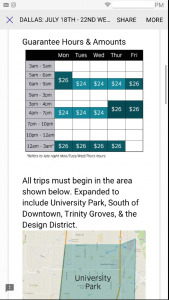
Drivers receive texts and terms, like instant mini-contracts, with stricter terms for driving in specific shifts. Sometimes, the text messages don’t contain all of the fine print, and drivers have to login to their app to find the remaining terms.
Typically, drivers have to do a certain number of trips per hour, be online and ready to receive ride requests for a set period of time, and have a 90% acceptance rate. They also may have to get high average ratings on all their trips and sometimes, they have to begin all trips from a prescribed location, like downtown LA.
How do tiered wages (“earning opportunities”) emerge from hourly guarantees?
Uber uses dynamic surge pricing as a primary incentive for relocating drivers to work in specific areas at specific times for a premium, and surging areas are readily available to all drivers but hourly guarantees are different. The company is able to select who amongst its drivers are eligible to work specific shifts with much stricter terms for fulfilling the requirements of their job. In essence, some drivers can earn more than others for working in the same areas at the same times. I wonder what this looks like. Who are the drivers at different tiers of wages? (e.g. what is the distribution of wages across drivers of different races or genders).
Are guarantees hard to achieve?
Some drivers debate that guarantees are set up to be difficult to get, such as when too many drivers are participating in the guarantee, and drivers are competing with a flooded market to meet the criteria. More specifically, some drivers assert that they don’t always receive the guaranteed amount even when they meet the criteria. In effect, they have to self-track their own actions, as well as the actions on their screen. E.g. They have to accept 90% of ride requests, and they accept all ride requests they see come their way.
But later, Uber might argue that their ride acceptance rate was actually below the minimum threshold. Some drivers discuss the possibility of “ghost” requests that flash across the screen momentarily, and too quickly to accept, although these could just be instances of driver/user error. The confusion points to the need for self-tracking, as a type of audit on how the app monitors drivers as they work.
Management Implications of Design
Drivers can’t see whether they’re fulfilling the guarantee criteria as they work; they usually find out in the following week’s pay statement. A useful feature could show, for example, real-time stats showing whether a driver has accepted 90% of ride requests, or if their rating is sufficiently high to earn the guarantee. The absence of real-time tracking effectively encourages drivers to over-compensate and do a few extra trips, etc. to ensure that they meet the guarantee requirements. Yet, this visibility issue favors Uber, not drivers, who could retire for the day if their goal is merely to meet the guarantee, or who could work on the specific criteria where they are lagging.
Sidebar: There are competing theories from drivers about how Uber’s incentives intersect with dispatching priorities.
- Does Uber favor “power drivers” with ride request (“ping”) prioritization – those who work 50+ hours per week and complete large volumes of trips – to better retain a monopoly on them?
- Does Uber make it difficult for drivers to earn hourly guarantees, for which drivers have to do a minimum number of trips per hour? e.g. if Uber floods a local market with drivers, or messages a slew of them to come work in a particular place at a particular time with advertisements of “high demand” or surge, the guarantee-drivers are competing with many others to get their minimums in.
4. Fickle Dispatcher
One of the touted benefits of Uber’s automated dispatcher is that its automated, fair and simple: the nearest driver gets the ride request. Drivers who have previously worked as for-hire drivers may prefer it to a human dispatcher who favors some drivers and send them the most lucrative fares, while others get the short of end of the stick. Yet, drivers sometimes wonder if the automated dispatcher is actually favoring some drivers over others.
- Uber has terrible retention rates, but they recruit constantly, and they compete with Lyft for new drivers and especially for power drivers. Hypothetically, if I were Uber, I would know that new drivers typically drop off the system if they don’t make X amount within, say, the first 3 months. I might prioritize newer drivers for more lucrative fares, or in priority sequence so that they optimize more of their time on the road. Some drivers have started to suspect that the dispatcher does favor some over others. Or, dispatching to the closest driver might just be something that works so well, no one should touch it or try to optimize it.
- There are technical complications in assigning a ride request to the closest driver – for example, the GPS might be slightly off. Another complicating factor could be in trying to assign a passenger to a driver who is approaching them, rather than just past them. In a city like New York, if the driver has to go around the block, that could be another 10 minutes in heavy traffic. Or, if the driver is at an airport and they have to circle around again, that lap would eat up time, too.
Where do theories of dispatcher favoritism come from?
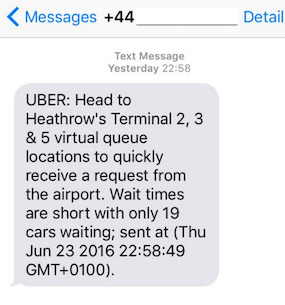
Drivers occasionally relay experiences where they perceive they were unfairly passed over for a ride request. In a sample scenario, a veteran driver arrives at the airport around the same time as a new driver, a buddy he recruited for a bonus. The rule at airports is generally that drivers are put in a queue based on their order of arrival, rather than having the ride request go to the driver who is holding his cell phone out nearest passenger requests, or spoofing the system to trick it into thinking he’s closest. There’s a cell phone parking lot full of drivers who are waiting. But shortly after arriving together, the new driver gets a ride request, even though there’s a cell phone lot full of other drivers waiting in line. It’s possible that this is just a GPS error though – it’s challenging to allocate dispatch requests, especially in high-traffic, high-density areas.
Wrapping It All Up
What I’ve outlined here, as a provocation piece, are just a few areas of potential inequities for individual earners in Uber’s system. One of the important takeaways is that technology-mediated work doesn’t automatically produce equal accountability for drivers and Uber. That could be by design or it could just be an oversight, or simply because an issue is not a priority.
Technology companies are often a little cagey about how their technology works, and that invisibility is usually fine when everything works seamlessly – when things go wrong, though, users – or workers – might feel irritated or even deceived, especially if they have limited recourse to resolve issues they encounter.
Features or communications that increase transparency and driver awareness of the technology they interact with could improve driver-company relations, and reduce pain points at work.
The other clear takeaway is that drivers would have to do a ton of self-tracking to maintain an equitable relationship with their app-employer. This is an area that deserves further scrutiny, and might benefit from an automated solution that tracks driver activities and pay on their behalf. As Harry has pointed out to me, if a driver is just trying to earn a couple hundred dollars, should they spend 3h/day tracking everything? Not everyone’s prepared to run a small business, but many people in the gig economy are prepared to run errands.
Drivers, have you ever experienced any similar examples of wage theft while working for Uber or other on-demand platforms? Write in with your experience or leave a comment below. You can also email the author directly: pingalex[at]datasociety.net
-Alex @ RSG
